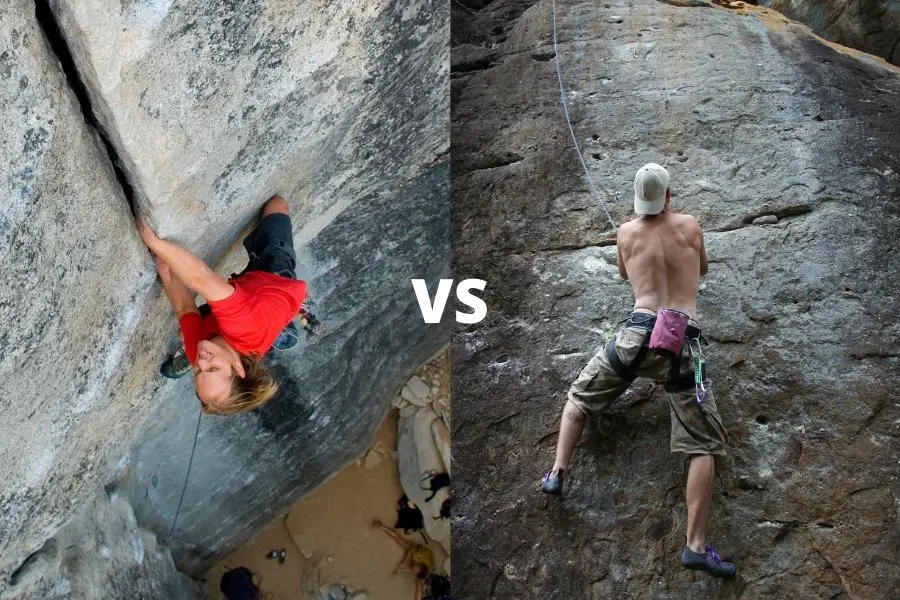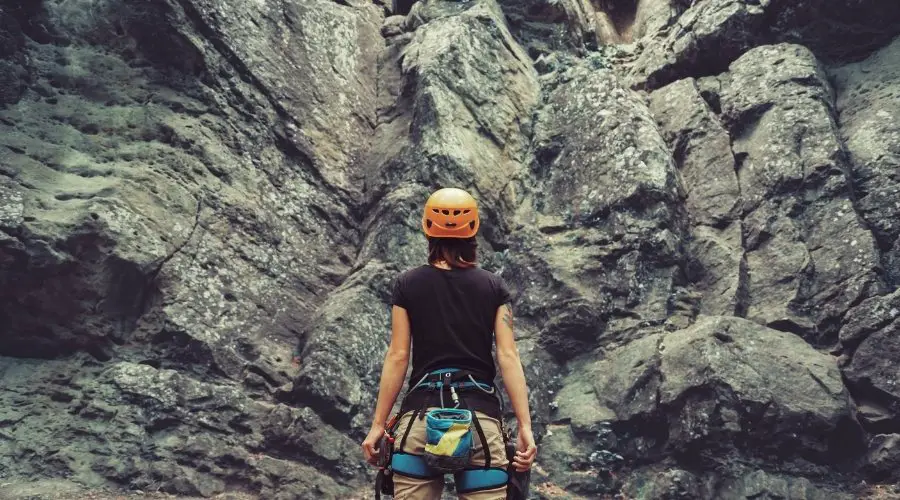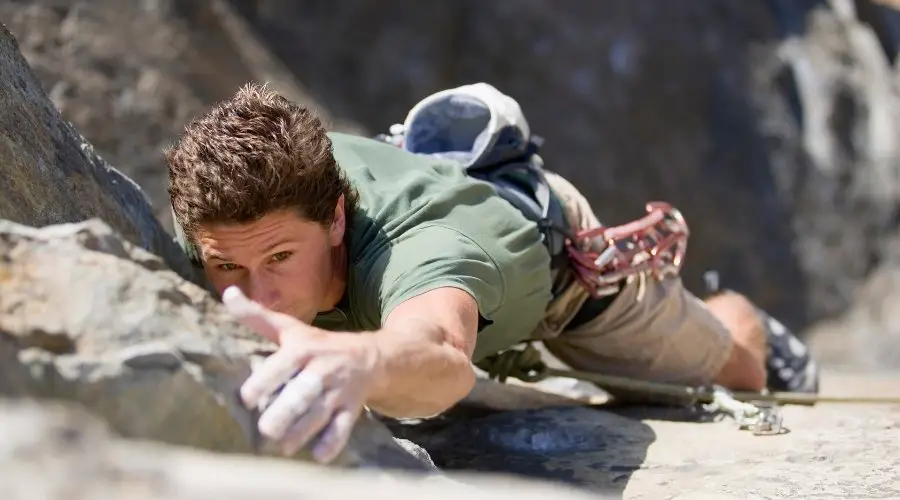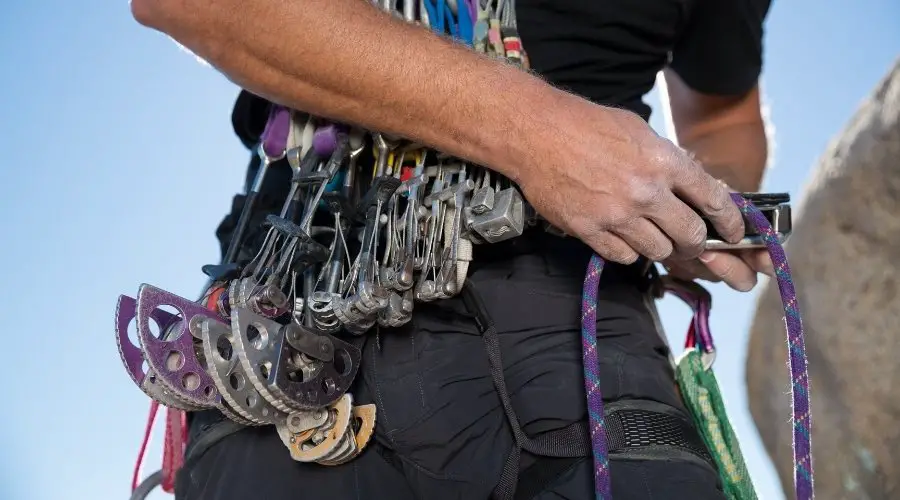Crack climbing and face climbing are both very different and hardly overlap. Great crack climbers are typically not great face climbers and vice versa. But what exactly causes these two types of climbing to be so unique?
Crack climbing requires climbers to follow a crack system in the rock and jam parts of their body into the wall to climb it. Face climbing requires climbers to read the route and hang onto the wall’s features and outcrops to scale it. The two climbing types differ in technique, physical demands, and gear.
From an inexperienced crack climber’s perspective, both face climbing and crack climbing seem quite similar. This could not be further from the truth. This article explores the different climbing styles in detail and highlights why some climbers are better at one than the other.
Crack Climbing vs Face Climbing

Crack climbing is a form of climbing that requires climbers to shove as much of their bodies into the wall as they can. Generally the more they can fit into the wall, the more solid their hold will be.
Face climbing on the other hand forces climbers to use whatever they can get their hands and feet on protruding from the wall. This could be as small as a 1 millimeter edge or a 2 meter wide ledge.
As I mentioned above, crack climbing and face climbing are incredibly different and therefore do not transfer over well. This is why you see absolutely incredible sport climbers “struggle” with crack climbing. But don’t just take my word for it, take a professional climber’s word for it.
Magnus Midtbø is naturally a very talented climber and one of the only climbers in the world to sport climb 9b. Watch the timestamped YouTube video below to see how he compares in a crack climbing gym session with world class crack climber Pete Whittaker.
While Magnus did extremely well, he is far from Pete Whittaker’s level in crack climbing. In the video, Magnus even expresses how he felt that route was impossible for him and spoke to the different techniques required. Coming from a 9b climber, that should not be taken lightly.
So why exactly are these two climbing styles so different? Well, it boils down to three main things: differing climbing techniques, physical demands, and gear.
Climbing Techniques
On average, crack climbing requires more technique and micro-beta than face climbing. Face climbing typically requires better body position, tension, and balance than crack climbing.
Obviously there are exceptions to this but for most similarly graded routes, the statement above holds true. Especially when climbing off-width cracks. Those are widely heralded as the most challenging and technically difficult crack width. To see the sizing and get helpful tips for each crack width check out my article here.
Crack climbing is all about jamming and stacking body parts to get the best torque on the rock to stick in the crack. The difference between being able to climb the crack and falling out of it can be as simple as bending your thumb.
The number one rule in crack climbing is to keep your entire body in line with the crack (legs, arms, torso, etc). This is easier said than done. Especially when such detail is required in every single move you do.
While crack climbing is very technically involved, the routes themselves are relatively straight forward. Cracks inherently provide very natural and obvious lines for climbers to attempt. Face climbing on the other hand can be a puzzle and require climbers to spend more mental energy reading the route and finding the right beta.

In addition to this, face climbing is all about having good balance and the right body position to rely on your feet to propel you up the wall. While more advanced techniques (such as heel hooks, toe hooks, flagging, etc.) come into play at higher grades, the overall level of technique and detail is generally not as involved as a crack climb of similar grade.
Physical Demands
Crack climbing is much more abrasive and damaging to the back of climbers hands due to constantly having to jam them into the wall. As such, it is common for climbers to wear tape gloves or crack gloves to protect the backs of their hands.
In addition to this, crack climbing relies heavier on certain muscles than face climbing. Crack climbing typically requires more core strength and upper body strength than face climbing. On the other hand, face climbing typically relies more on finger and grip strength.
The different physical demands of the styles coupled with the drastically different techniques used in them do not overlap in climbing progress. Typically becoming a good crack climber will have little to no transfer/carry over into a climber’s face climbing ability.

Equipment Needs
Perhaps the most underrated difference in the two styles of climbing is the equipment needed. Face climbing typically is associated with top rope and sport climbing whereas crack climbing is commonly associated with trad climbing.
Trad climbing requires climbers to place their own protection as they scale the wall. Cracks in the wall offer trad climbers ample spots to set their gear. Face climbing on the other hand typically offers little to no spots for climbers to place gear. This is why face climbs are commonly bolted for sport climbing. Therefore, crack climbing typically requires a lot more gear than face climbing.
If you are interested in seeing what the current prices are for the most popular cam sets, you can find them on Amazon by clicking here.

In addition to this, crack climbing requires different shoes than face climbing.
Crack climbing typically favors stiffer shoes with a neutral downturn and low profile. Face climbing on the other hand typically favors softer shoes with a more moderate to aggressive downturn.
Using soft, aggressively downturned shoes helps climbers use small footholds and climb highly technical steep overhanging routes. That said, they are terrible for crack climbing.
Crack climbing requires shoes that have a low profile to slot deeper into the cracks. Low profile shoes typically will be neutrally downturned and have laces (not velcro). The neutral downturn is much more friendly on a climber’s feet while foot jamming than aggressive shoes.
On top of this, stiff shoes are preferred in crack climbing because they give the climber a better “platform” to stand up on when climbing the crack. Soft shoes bend too much and do not provide the necessary support to crack climb effectively.
To see the best gear for crack climbing, check out my article here which explores this topic in depth.
